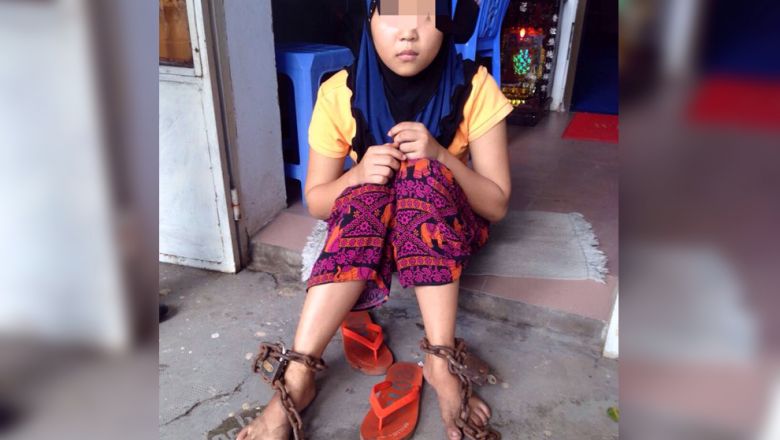Unofficial Translation from The Phnom Penh Post’s Khmer edition
TUESDAY, 07 JANUARY 2020,
TONG SOPRACH
ស៊ើបអង្កេតការជួញដូរ មនុស្សតាមឌីជីថល និង ធនាគារ ជួយពន្លឿនក្នុងការចាប់ខ្លួនជនល្មើស

On 12 December 2019, the Royal Government of Cambodia celebrated the 13th National Anti-Human Trafficking Day to intensify its anti-human trafficking campaign by calling for cooperation with countries where this is still happening. Human trafficking is still taking place today through job finding, marriage, labor exploitation, sexual trafficking and child trafficking.
The government is committed to ending all kinds of human trafficking. In 2017, the government helped to repatriate 990 Cambodian victims, mostly from Thailand, Malaysia, China and Vietnam. In the first half of 2019, a total of 80 cases were reported for local crackdowns on human and sexual trafficking and prostitution to rescue victims. Moving forward, the government will continue to push for the implementation of the National Strategic Plan (2019-2023) on Countering Trafficking in Persons.
Looking at the 2018 Trafficking in Persons Report, the US Department of States remains its Tier 2 Watch list for Cambodia in its fight against human trafficking. According to the report, the progress made thus far in the fight against trafficking is due to Cambodia’s willingness to implement the law and cooperation with the countries, but is there is still limited use of digital technologies and banking systems to identify perpetrators.
Human traffickers are now making use of modern technologies such as bank transfers and cash withdrawal via ATMs, however the authorities have not been able to adapt quickly enough to respond to these advancements.
Last year, I attended the Trust Conference hosted by the Thomson Reuters Foundation in London, UK on Modern Slavery and Human Trafficking. The topic of cracking down on human and sexual trafficking using digital technologies and banking systems was raised in a panel discussion, and concluded with a recommendation that each state should improve its communication system in the fight against trafficking.
The speaker, a senior official from Standard Chartered Bank’s headquarters, told me: “If you know of a human trafficking offender who is partnered with Standard Chartered Bank, please tell me. I will help find the perpetrator through the banking system. ”
In the March 2018 report of The Economist, a 30-minute video on “How can banks be used to stop human trafficking” illustrated how some investigations are being conducted using the digital technology of the banking system to catch criminals by transferring money, banking, mapping, and ATM withdrawal locations. In other parts, police officers are using online investigative technology to locate sexual services and labor exploitation sites.
The video also provided examples of how Canada has initiated digital surveillance campaigns using digital technologies and banking systems. Through this work, they have observed a 350 percent increase in human and sexual trafficking crackdowns in a one year period, in 2017.
For example, in Cambodia, there was case of human trafficking through surrogacy by Tammy Davis-Charles, Australian, who was arrested for human trafficking and sentenced to prison for 18 months.
With law enforcement, police officers can conduct investigations using digital technologies and banking systems to find all network stakeholders; especially, parents of infants who are foreigners and surrogate Khmer women. It is possible to trace these individuals as they will have sent/received bank money transfers. Through this work, it is also possible to identify the parents of the surrogate and who are the surrogated woman of them [the baby parents] easily through investigating and detention. By cooperating with the country of those perpetrators, an extradition law can be put in place and enforced.
So far, the Cambodian banking system has been working to improve the monitoring and investigation of money laundering. Police officers sometimes conduct investigations from one-to-another person and waste a lot of time and sometimes take action too late, the offender is aware of the authority’s action and then they hired or escaped. In addition, the use of the apps and alert systems can provide information, monitoring, investigation, and verification of the location on maps.
A recent year, InSTEDD has also provided training to several non-government officers to prevent human trafficking in Phnom Penh on their phone alert system.
Likewise, the Go Green Cambodia environmental volunteers teamed up with InSTEDD through the SPIDER project to support the Phnom Penh Capital Hall through digital app “Go Green Cambodia” to identify the location by pinning the point where waste is scattered and to alert authorities; Similarly, a digital app can be created to locate perpetrators or victims of human and/or sexual trafficking.
In conclusion, investigations into human trafficking can be strengthened through the use of digital technologies and banking systems. Through these mechanisms, it is possible to enable timely law enforcement to arrest human trafficking perpetrators and networks. Therefore, the government should add this new strategy on digital technology and collaborate with national and international banks to help investigate human and sexual trafficking faster.
Tong Soprach is a social affairs columnist for The Post’s Khmer edition.
Comments: [email protected]
